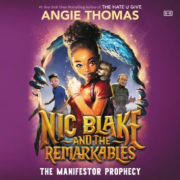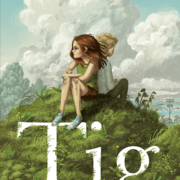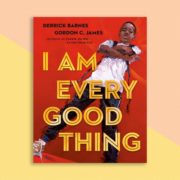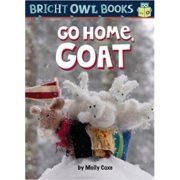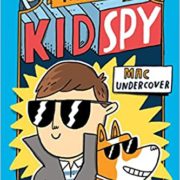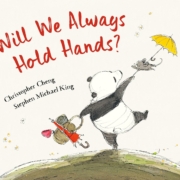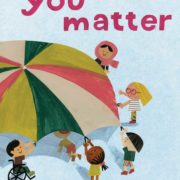Go, Wilma, Go! by Amira Rose Davis and Michael G. Long and The Blackwoods by Brandy Colbert
February marks the beginning of Black History Month. I have likely mentioned this in previous columns, but I like to challenge myself to be intentional about reading books by Black authors every February. I snagged a few of the books on my list from the Black History Month display in the Children’s Department. If Young Adult or Adult books are more your thing, check out the displays in the lobby or the Teen area.
The first title I want to share is the nonfiction picture book Go, Wilma, Go: Wilma Rudolph, from Athlete to Activist by Amira Rose Davis and Michael G. Long, with illustrations by Charnelle Pinkney Barlow. Because of the nature of their format, one might assume that the target audience for nonfiction picture books is preschool-aged children. On the contrary, history picture books tend to be word and concept-heavy, making them more appealing to elementary-aged students. Some of these titles would work best as book studies, perhaps in a classroom or read with a grownup over an extended period of time. Others, while still detailing big ideas and concepts, also work well as readalouds.
Go, Wilma, Go falls into the latter category. Due to its comparatively simple language and appealing papercut illustration style, a parent or caregiver could easily read it in one sitting. The book begins with Rudolph winning a gold medal in track and field at the 1960 Olympics. The authors compare her experiences in Europe, where Black and White people could ride the same buses and swim in the same pools, with her hometown of Clarksville, Tennessee in the Jim Crow South. The juxtaposed scenes provide a simple visual of what life could be like in the United States if lawmakers abolished unjust laws. The authors detail Rudolph’s brave decision to speak out against these laws, often repeating the phrase, “Go, Wilma, go!” in response to her activism. When Clarksville announces a celebratory parade in her honor, Wilma refuses to attend unless Black people can be an equal part of the parade.
I have read a bit about Wilma Rudolph and have heard about her Olympic feats, but I had not read about the parade and her role in fighting back against racism in her small Southern town. I appreciate the story is told simply but does not shy away from detailing events as they happened.
The book addresses sensitive topics like racism and segregation because they are unfortunately part of Rudolph’s lived experience. Davis and Long include an authors’ note at the end, if grownups want to extend the conversation with their young readers. Pair this with the Wilma Rudolph book in the Little People, Big Dreams series by Ma Isabel Sanchez Vegara for a full look at Rudolph’s life. I would recommend this book for children ages 6-9 who are interested in sports, history, and biographies.
Another recent favorite read is The Blackwoods by acclaimed young adult author Brandy Colbert. In this 2024 intergenerational novel, Colbert tells the story of legendary Hollywood matriarch Blossom Blackwood and her prodigious children and grandchildren. Blossom’s story begins in the 1960s as she grows up in Hollywood and becomes an acclaimed actress. She must fight back against societal expectations, racism, relationships, and other barriers in pursuit of her dreams.
Colbert tells the story of the Blackwood family as a whole, though Blossom’s great-granddaughters Ardith and Hollis are the other main characters. Ardith and Hollis are best friends but have taken very different paths. Ardith is a famous actress in her own right, having taken after her grandmother and her mother, who she tragically lost as a young child. Hollis is figuring out how to carve her own path at her prestigious school while living in the shadow of the Blackwood name. Both girls, however, are trying to push back against societal and familial expectations while staying true to themselves. Ardith and Hollis are managing their own issues and relationships, but they also remain committed to their family. The Blackwoods are a strong family, though they are not perfect, and I enjoyed reading about how they remained committed to one another.
I love a good intergenerational story, and Colbert executes this type of story well. I appreciated all three characters’ stories, personal struggles, and their connections to one another. In her author’s note, Colbert details the research she conducted on Black Hollywood, and how the Blackwoods are an amalgamation of many Hollywood families. I appreciate the authentic glimpse into early Hollywood, specifically through the lens of an African American actress, and I am interested in learning more. This book addresses some challenging topics, but I think fans of intergenerational novels, historical fiction, and contemporary fiction will enjoy The Blackwoods. Although it is geared toward teen readers ages 15 and up, Colbert’s novel has crossover appeal for adult readers.

